Grilled chicken breasts can be juicy and tender with only a few simple steps. In about 30 minutes, you can have perfect chicken breasts every time. Just pay attention to our tips and follow the easy step-by-step photo instructions.
🐓Ingredients
Chicken breasts—skinless, boneless 8-12 oz each.
Vegetable or Olive oil
Optional Brine—water, salt, brown sugar
Suggested Spices—garlic powder, paprika, kosher salt, black pepper
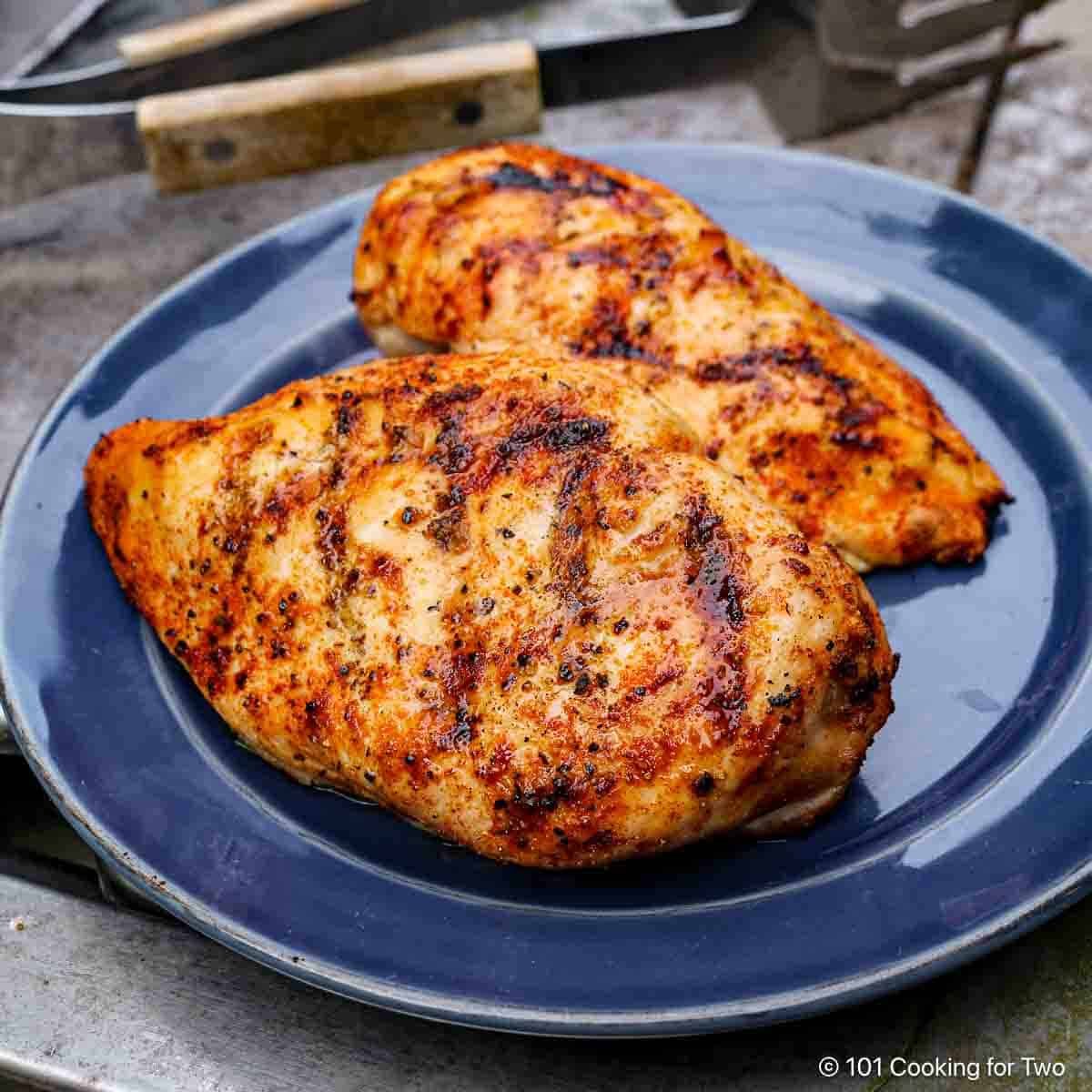
Jump To (scroll for more)

Featured Comment from Richard:
"Love your cooking directions, really helped me learn to grill…"
Most grill owners struggle with grilled chicken breasts. They get hockey pucks due to the wrong temperature or timing—let's fix it.
Learn the simple basics of grill temperature, how long to grill chicken breasts and the final internal temperature. Then, you can have the best healthy grilled chicken breasts.
👨🍳How to Grill Chicken Breasts on a Gas Gri—Step-by-Step Photo Instruction
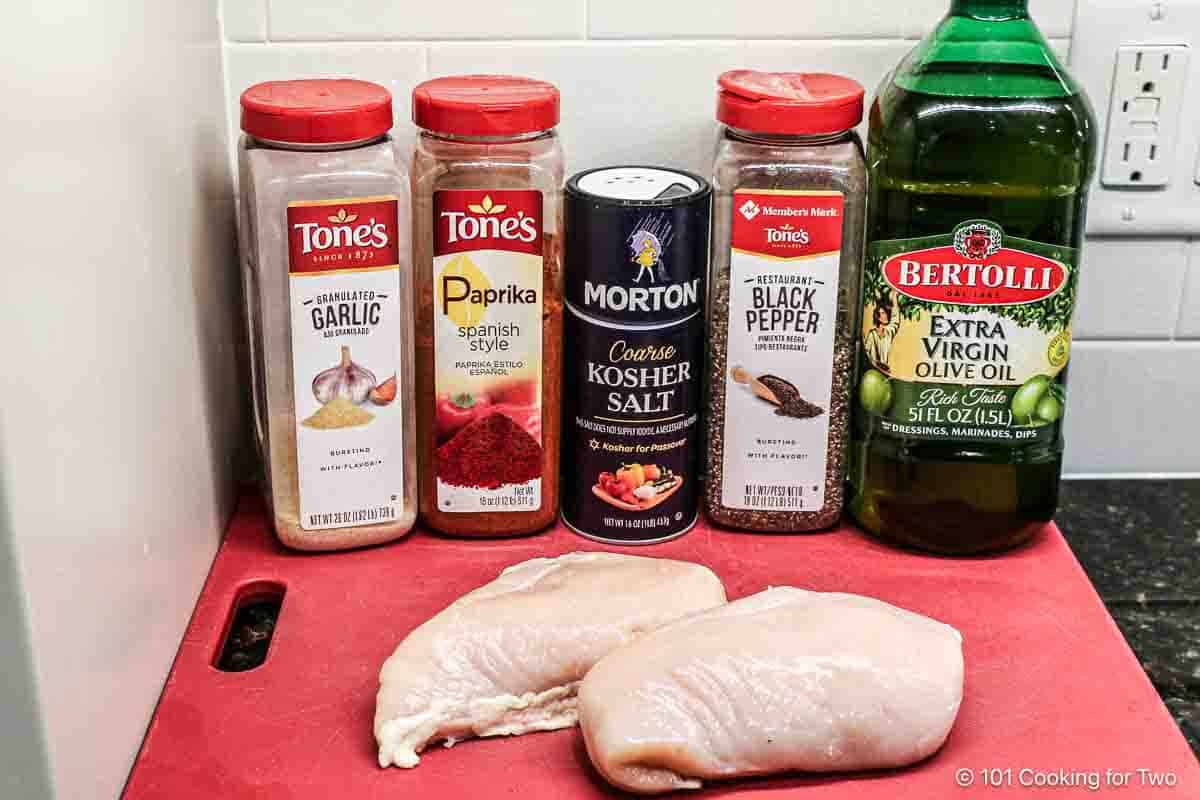
1. Pick chicken breasts of about the same size.
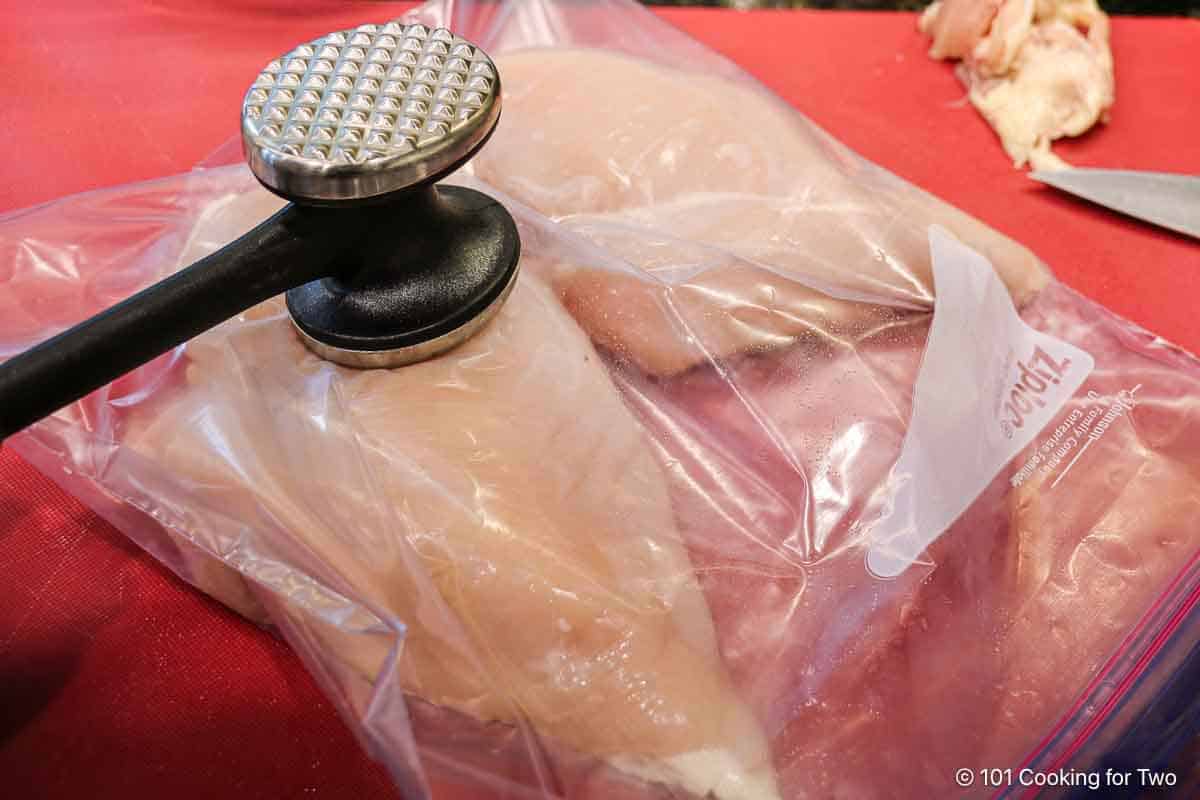
2. Trim the chicken breasts, flatten if thick, and brine if you wish.
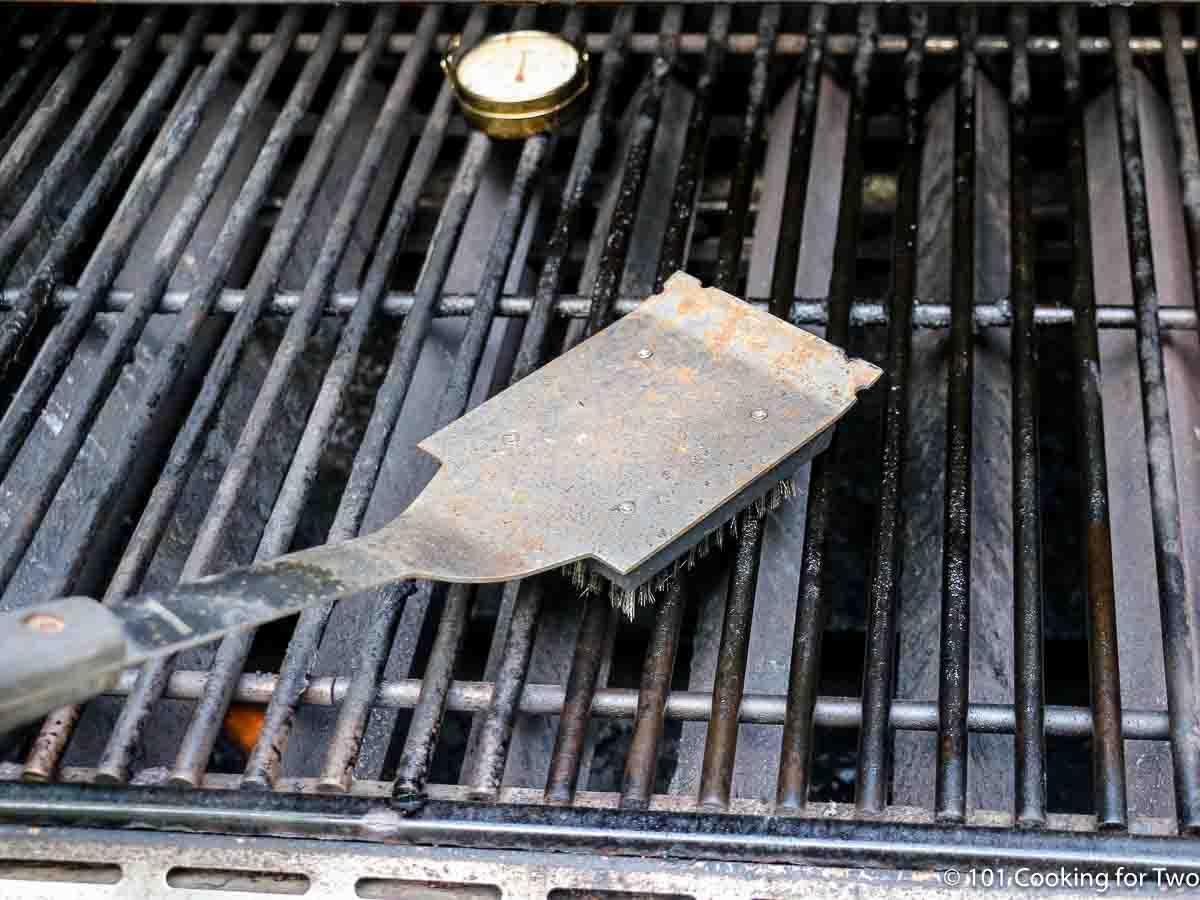
3. Clean and oil the grill grates. Preheat to a surface temperature of 450°.
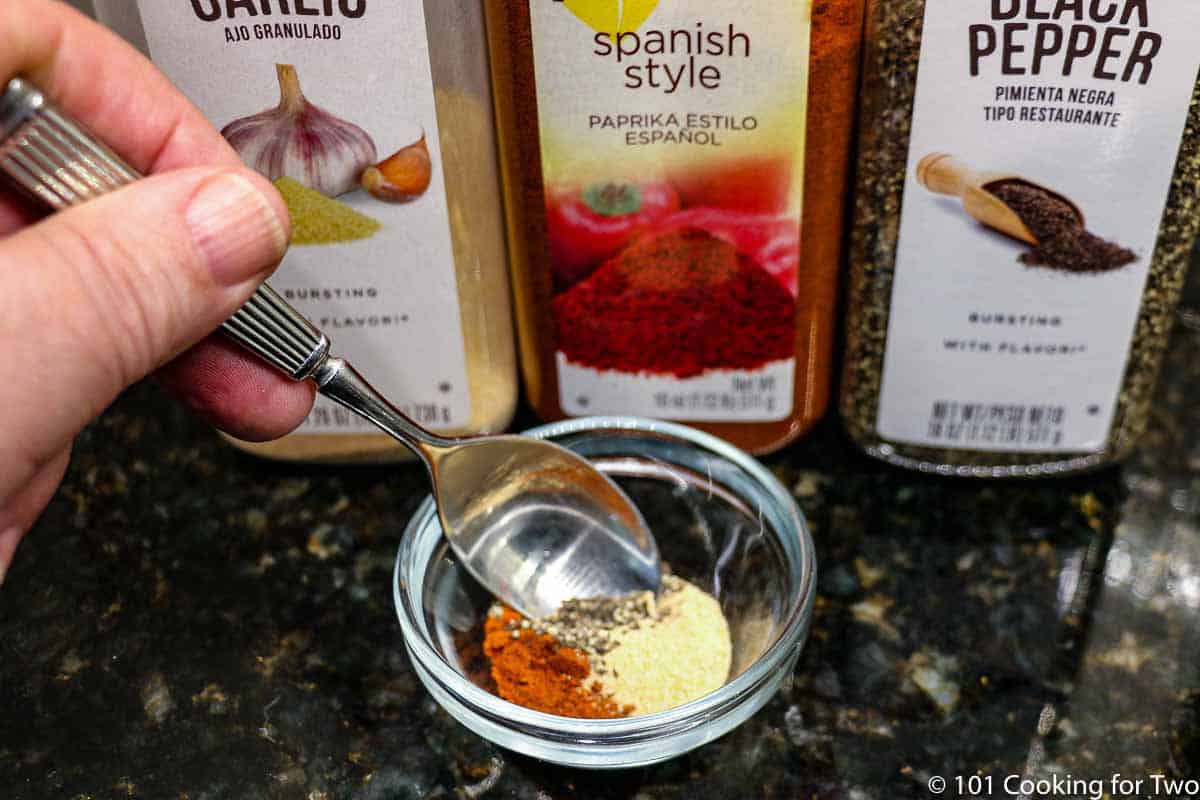
4. Mix seasoning.
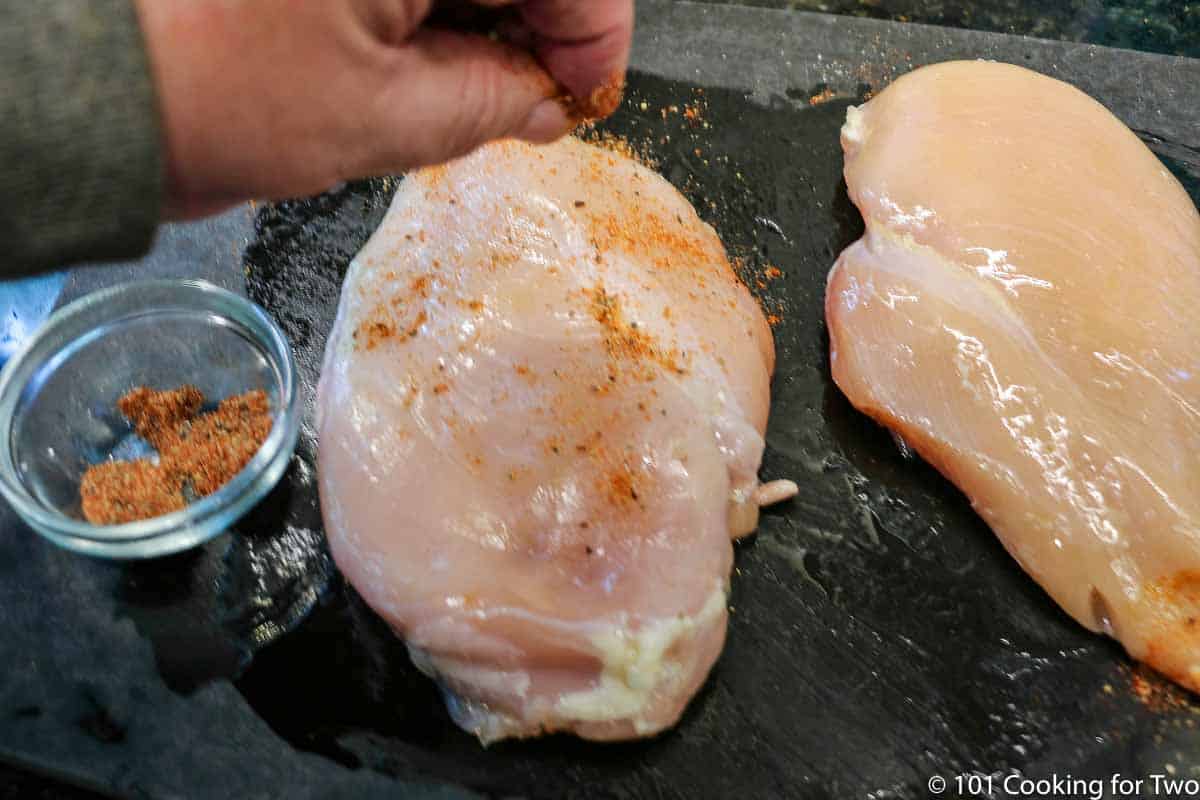
5. Pat dry, brush with oil, and sprinkle all sides with a light coat of seasoning.
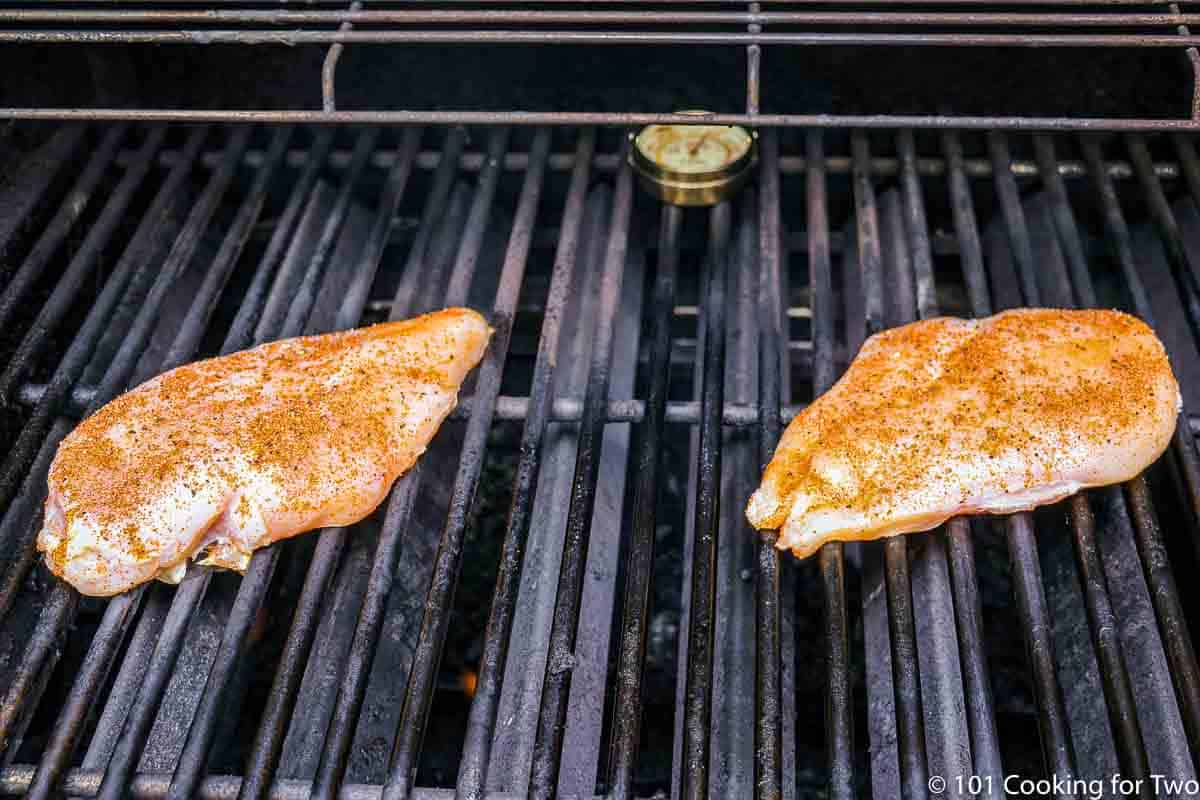
6. Grill at 450* with a closed lid. Flip every 5 minutes until the internal temperature is 165°—about 20 minutes. Rest for 5 minutes before serving.
For more details, keep reading. See the Recipe Card below for complete instructions and to print.
⏰How long to grill chicken breasts
Chicken breasts will take about 20 minutes to cook to 165° on a medium-high grill of 450°. Smaller breasts may be a bit less, and larger ones may be longer. Chicken cutlets will cook faster since they are thinner—as little as 10 minutes.
Remember to never cook by time alone—cook to the final safe internal temperature of 165°. The exact time will vary by the grill and the thickness and starting temperature of the meat.
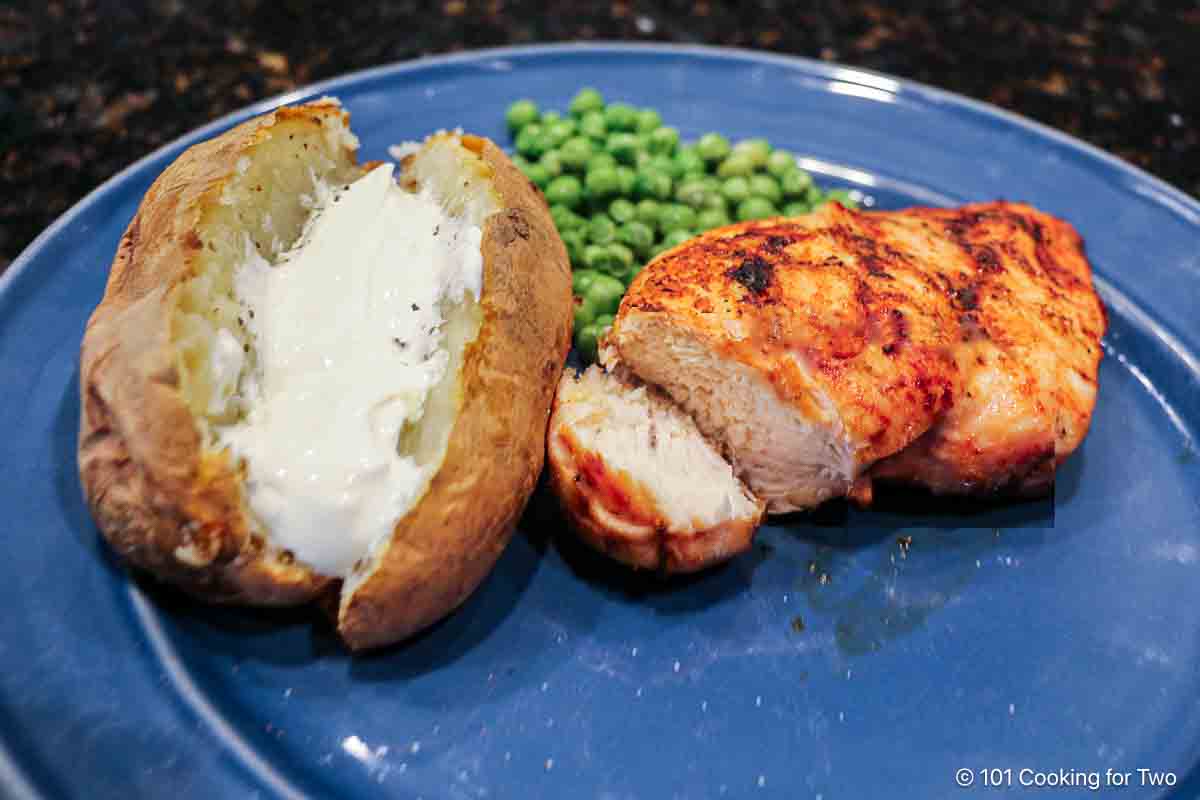
Get it right every time.
Cook chicken breasts of about the same size and thickness. If thicker than ¾ inch, thin out the breast. Brine, if you have time.
If the chicken is frozen, it must be thawed before proceeding. The frozen breast will overcook or burn the surface before the center reaches the safe 165°.
Get the grill temperature correct. While I use a gas grill, a charcoal grill may be used as long as you control the temperature.
The best grill temperature for chicken breasts is about 450°. Cook until the internal temperature reaches 165°. Less is not safe, and higher temperatures will dry the meat.
Use a grill surface thermometer. If you don't have one (you should), medium to medium-high heat will be about 400°-500° on most gas grills. Please see A Beginners Guide to Grill Temperature on a Gas Grill for more discussion.
🧂How to season chicken breasts
I have suggested a chicken seasoning of paprika, garlic, salt, and pepper, which you can adjust. You may also use any combination of seasonings and herbs you love. You can add dried spices or fresh herbs to the brine. However, fresh herbs tend to burn during grilling.
Most commercial seasonings are heavy in salt and, if used with brined meat, will be too salty for most tastes.
Add a great marinade like Lemon Chicken Marinade. Or try a dry rub like BBQ Dry Rub or Memphis Dry Rub.
Should I brine?
You can still get good results without a brine, but you will be consistently better with a brine. Also, if the breasts have been frozen, they lose moisture, and brine will help.
To brine chicken breast, use 2 cups of water with a tablespoon of table salt and brown sugar. You can add other flavors, like garlic. I like to use a zip-top bag, but you can use a bowl if the chicken is covered.
With this brine, you can get reasonably good results in 20 minutes. You can brine for up to 1 hour, but more than that leaves too much salty taste to me. And over 2 hours for chicken can cause some mushy texture.
After brining, you should carefully rinse the salt off the surface. For food safety, try not to splatter and lean up with an antibacterial cleaner in the sink area. See Chicken… To Rinse or Not To Rinse? for more food safety discussion.
Never use seasoning with salt if you have brined.
Chicken Breast Recipes
Don't miss these unique grilled chicken recipes, like BBQ Chicken Breasts, Honey-Glazed Grilled Chicken Breasts, and Blackened Chicken Breasts. You may also learn to grill a whole chicken on the gas grill.
Try the reverse searing method with Reverse Seared Grilled Skinless Boneless Chicken Breasts. And the kids will love Grilled Chicken Tenders.
If you have split (bone-in skin-on) chicken breasts, try Grilled BBQ Split Bone-in Chicken Breasts.
How to Serve
For a complete meal, try grilled side dishes like grilled asparagus, grilled baby potatoes, or grilled mixed vegetables. Or more traditional sides like baked potatoes and hot vegetables.
Finish with a dessert of grilled pineapple, homemade Apple Crumb Pie, or Berry Crisp.
❄️Storage of leftovers
Store leftovers in an airtight container in the refrigerator for 4 days or frozen for 3 months. To reheat, if frozen, thaw overnight in the fridge. Then reheat covered in the oven. Microwave will affect the texture.
❓FAQs
According to the FDA, chicken is done at 165° internal temperature in the thickest part. A higher temperature will dry, and a lower temperature is unsafe. An instant-read thermometer is required to get this right.
Grilled chicken breasts are healthy, with about 280 calories each, 8 grams of fat, and 1 gram of carbohydrates. So they will fit nicely in almost every diet, like low-calorie, low-fat, and even low-carb or keto diets.
If your chicken breasts are thicker or different in thickness, they need to be thinned to ¾ inch thick. Without flattening, the surface of the breast will be overcooked and dry before the center reaches a safe temperature.
To flatten, protect yourself and the surrounding area from splatter by placing the breast in plastic wrap or one-gallon freezer bags. Then, use a meat mallet, rolling pin, or the bottom of a heavy pan on a large cutting board.
Food safety
Raw chicken and other poultry should be considered contaminated and handled with care. Wash your hands carefully before and after touching raw chicken.
We do not routinely wash raw chicken due to water splatter. See Chicken... To Rinse or Not To Rinse? for more information.
You must cook chicken to an internal temperature of 165° for safety—see the USDA for more information. You need to check this with an instant-read thermometer.
Most recipes (including this one) include estimated cooking times. These are provided for planning purposes. You can not cook safely by time—you must use a thermometer.

📖 Recipe
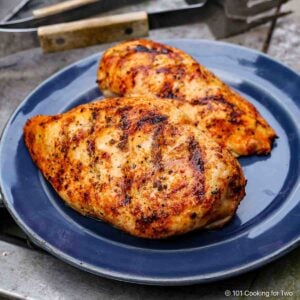
How to Grill Chicken Breasts on a Gas Grill
Video Slideshow
Ingredients
- 2 skinless boneless chicken breasts - .8-12 oz each.
- 1 teaspoon olive oil - or other vegetable
Optional Brine
- 2 cups water
- 1 tablespoon table salt
- 1 tablespoon brown sugar
Suggested Spices
- ½ teaspoon granular garlic powder
- ½ teaspoon paprika
- ¼ teaspoon pepper
- ½ teaspoon kosher salt
Instructions
- Pick chicken breasts of about the same size.
- Trim the chicken. If the breasts are thick, use a meat mallet and flatten the thickest part of the breasts to ¾ inch.
- If brining, combine 2 cups cold water with 1 tablespoon of table salt and 1 tablespoon of brown sugar. Submerge the chicken in the brine for up to 1 hour. As little as 20 minutes will help moisture a lot. Be sure to carefully rinse off the salt when done.
- Clean and oil the grill grates. Preheat to a surface temperature of 450°.
- Use the seasoning of your choice. I suggest ½ teaspoon paprika, ½ teaspoon garlic powder, and ¼ teaspoon black pepper. If not brining, add ½ teaspoon kosher salt. If you use a different seasoning, do not add more salt if you have brined.
- Pat dry the breasts, then brush with a light vegetable or olive oil coat.
- Sprinkle all sides with a light coat of seasoning.
- Place over direct heat with a closed lid. Flip every 5 minutes until an internal temperature of 165°—about 20 minutes most of the time, but check the temperature a few times early.
- Allow to rest for 5 minutes before serving.
Want to save this recipe for later?
Recipe Notes
Pro Tips
- It is impossible to get good results without a good instant-read thermometer. Extra points for a grill surface thermometer.
- Use fully thawed chicken breasts if frozen.
- The breasts should be about the same size if possible. Flatten to ¾ inch thick if needed.
- Brine if you have time. Be sure to have the breasts completely covered by the brine.
- Use seasoning or marinade of your choice, but not with salt if you brine.
- My BBQ chicken recipe is referenced in the post.
- Cook over direct heat with a grill surface temperature of about 450° and hood closed.
- Cook to 165°. Not higher (it will dry) or lower (not safe.)
- Rest for 5 minutes before serving.
- Smaller breasts or filets may cook faster.
- Good refrigerated for up to 3 days. Good frozen for 3-4 months.
Your Own Private Notes
To adjust the recipe size:
You may adjust the number of servings in this recipe card under servings. This does the math for the ingredients for you. BUT it does NOT adjust the text of the instructions. So you need to do that yourself.
Nutrition Estimate
© 101 Cooking for Two, LLC. All content and photographs are copyright protected by us or our vendors. While we appreciate your sharing our recipes, please realize copying, pasting, or duplicating full recipes to any social media, website, or electronic/printed media is strictly prohibited and a violation of our copyrights.
Editor's note: This article was originally published on June 7, 2019, and has been updated with expanded options, refreshed photos, and a table of contents to help with navigation.
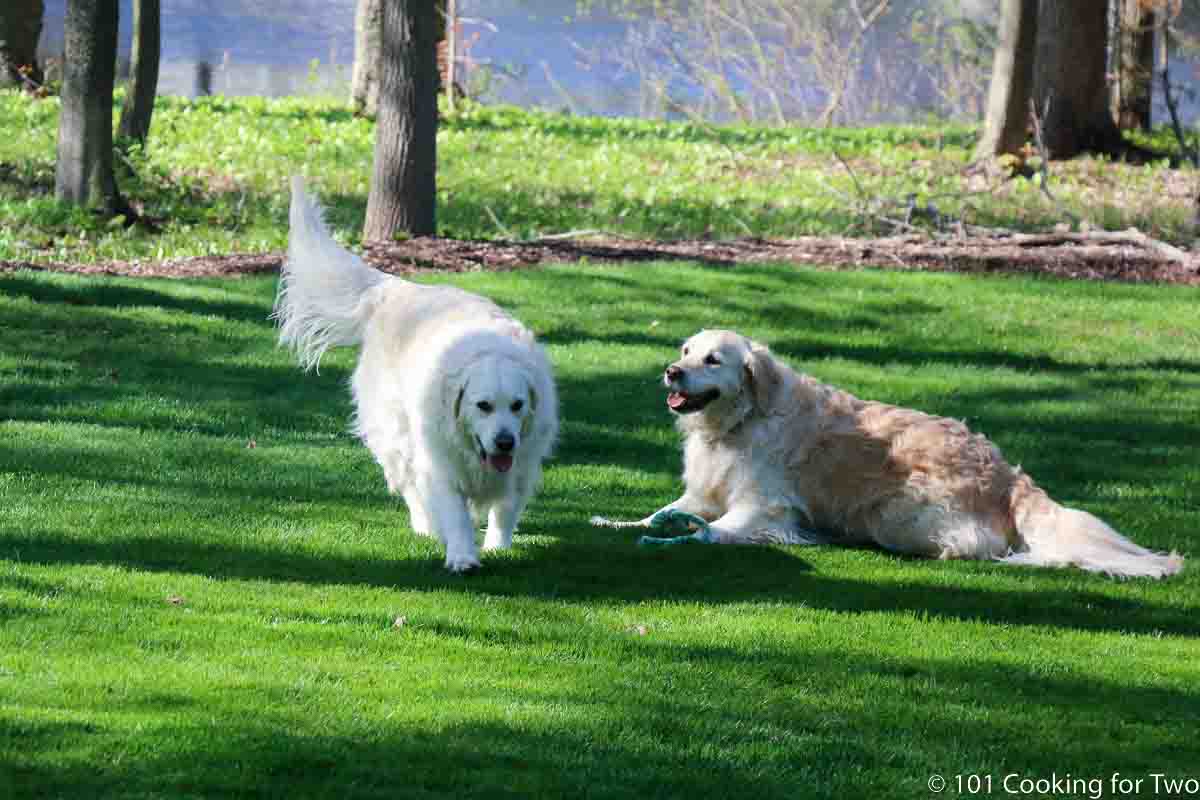

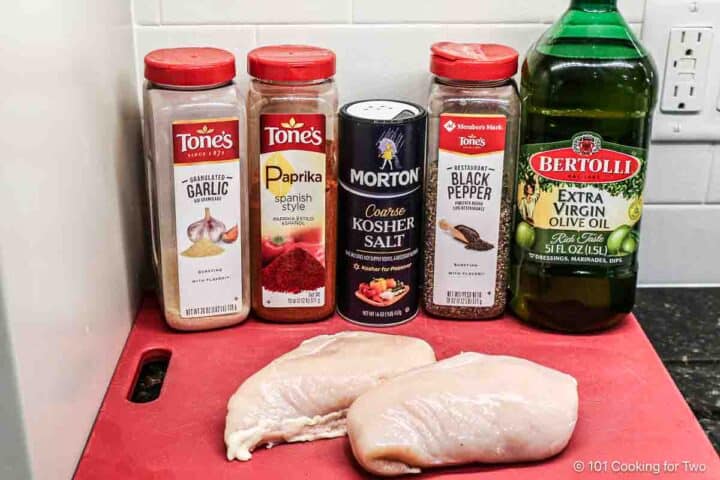
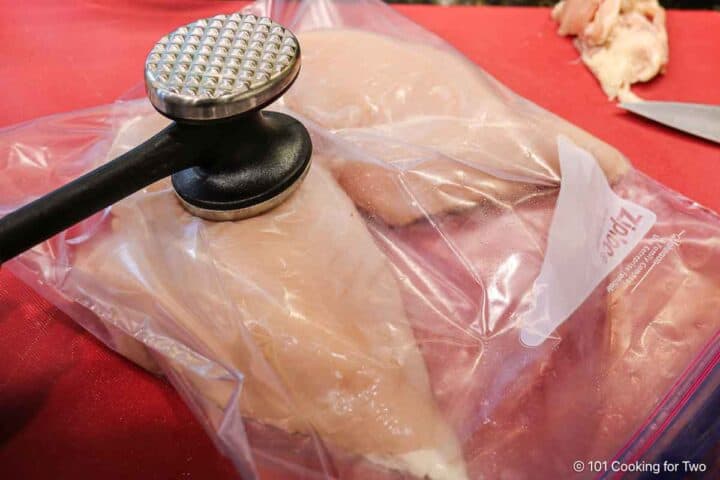
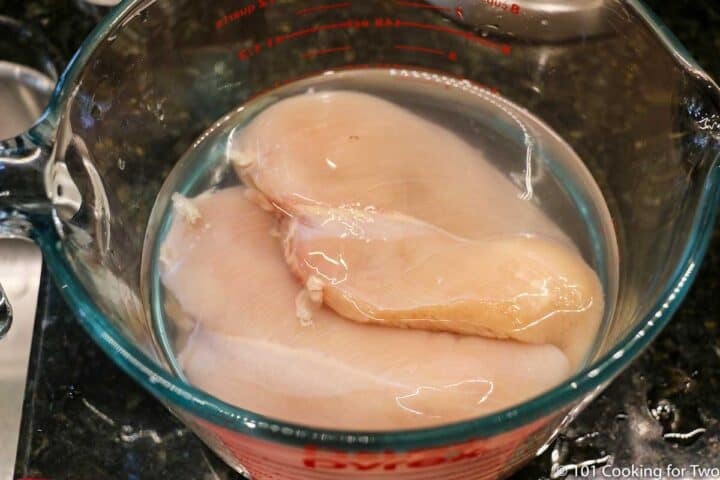
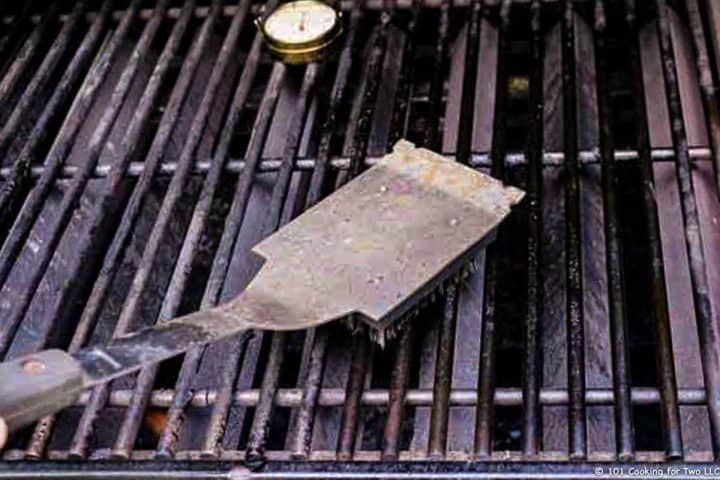
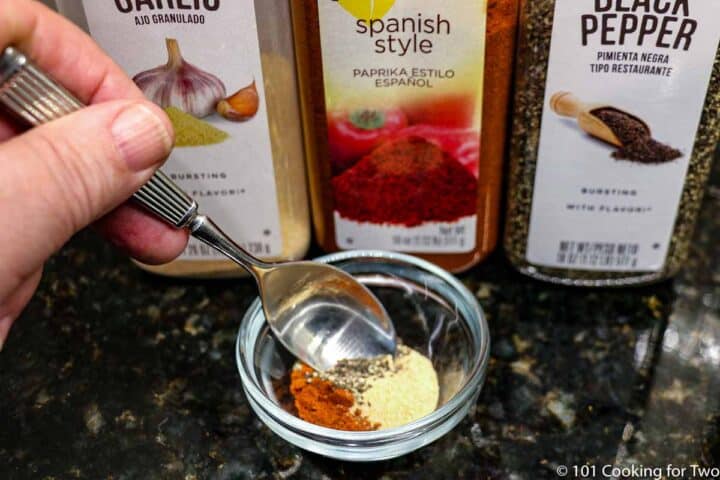
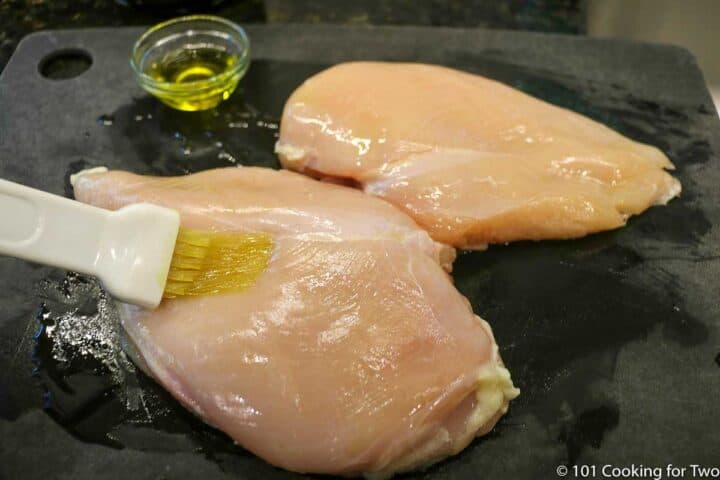
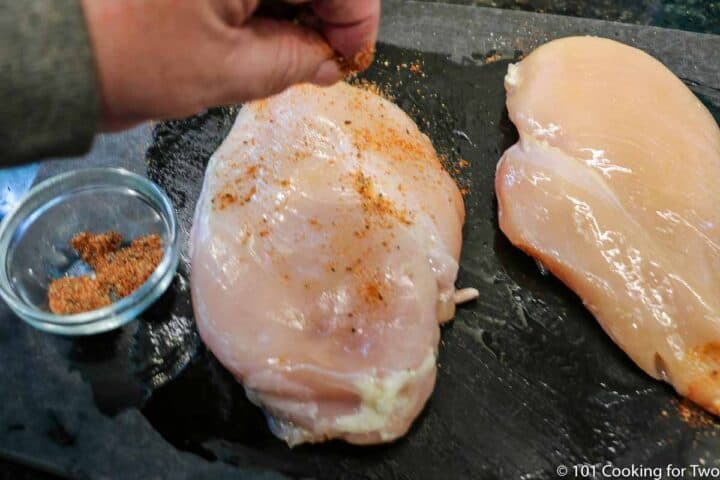
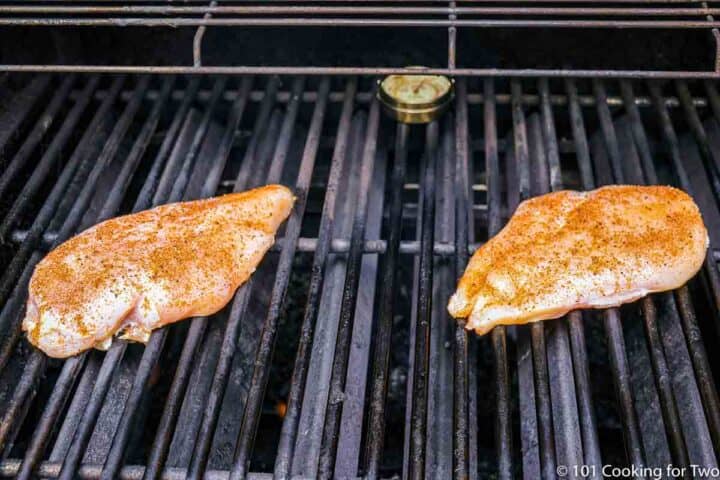
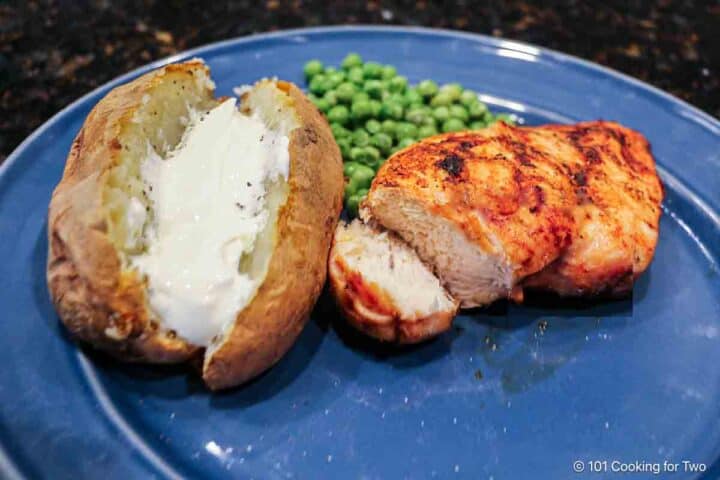
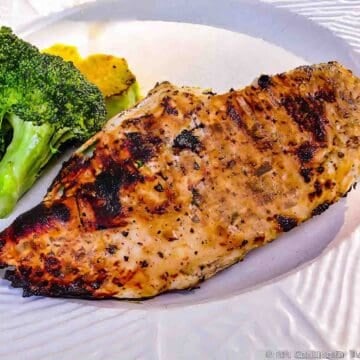
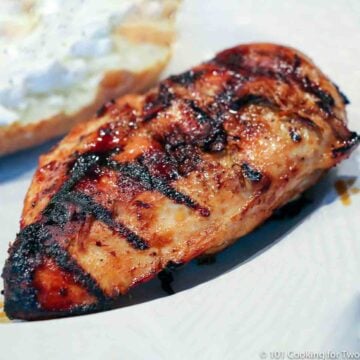
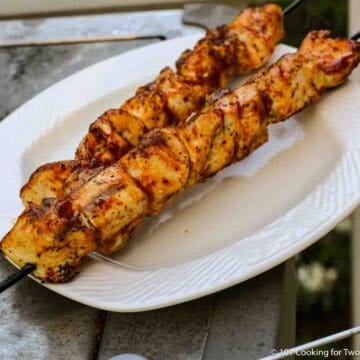
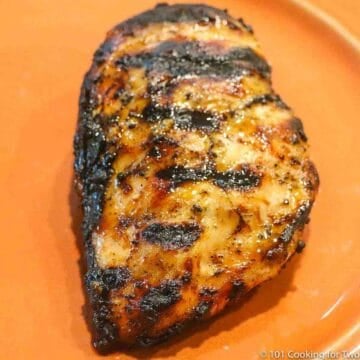
Chuck Kunze says
Dan, Thanks for the article - I've clearly been grilling chicken breasts at too high of a heat. Buying a grill surface thermometer tomorrow!
I use a Thermapen for all my grilling .. do you pull chicken breasts at 165 degrees or 10 degrees shy of that (assuming it will rise while resting)?
Thanks,
Chuck K
Dan Mikesell AKA DrDan says
Hi Chuck,
Welcome to the blog. I think we all grew up cooking chicken at too high of temp. You will be amazed at the difference. Most big box and hardware stores should have a grill surface thermometer.
I don't remove at lower temperature when there are safety issues involved. So I would go right to 165° in the thickest part. For things like steak, I may remove 3-5° early but not 10°,
Enjoy your chicken.
Dan
Steve Waltman says
I would also like to see this for electric grills. As an apartment dweller, fire codes forbid me from using something with a flame. Maybe it works similarly?
Dan Mikesell AKA DrDan says
Hi Steve,
You are the second person to ask recently. I did a fast Google and found that high is usually 500°-650° and medium high is listed as 400-450°. I would expect that to have some variation between brands but medium high seems to be the right setting for chicken and things like pork chops. And high for steaks and burgers. You may want to check your specific brand.
Dan
Richard says
Love your cooking directions, really helped me learn to grill and make it through the pandemic isolation!
Mike Malone says
This comment is not meant to be snarky or rude, but I have to disagree with the length of grilling time you suggest. My experience has been almost half that time. Otherwise, thank you.
Susan Hamilton says
I always start checking temps at 3rd turnover.
Chicken George says
I wholeheartedly agree. It's NEVER taken me more than 12 minutes total to grill chicken breast at the recommended temperature in this read. Flipping after 5 minutes and going another 5 to 6 minutes usually gets the job done, especially if you flatten them like in this article.
Dan Mikesell AKA DrDan says
Hi George (and Mike),
I like to publish other opinions. YMMV as they say.
Reminder to readers:
Always know your grill surface temperature—never use the hood temperature
Be sure to get to a final internal temperature of 165°
Cooking at higher temperature will tend to dry more.
Keep your eyes open.
Dan
Kim says
Dr. Dan,
I just happened upon your blog. I am so excited. You think you know how to cook - the kids grow up and move out - its just the two of you.... Not so good. I've forgotten how to cook and still can't cook for just two. I still make spaghetti for 8.
I'm so excited to read all that you have posted and give it a try -especially the grilling parts!
Thank you so much for sharing!
Kim
Tom kaminski says
Dr. Dan,
Thank you for your site👏👏. It is informative and very useful as there is only my wife and I. I appreciate you thoroughness and simple approach. Thanks
Dan Mikesell AKA DrDan says
Hi Tom,
Welcome to the site.
Glad you are enjoying the site.
Thanks for the note and let me know if you any questions.
Dan
Sue Shortley says
Hi Dr. Dan, open or closed grill? Thanks, Sue
Dan Mikesell AKA DrDan says
Hi Sue,
Welcome to the blog.
Closed. General rules: Things under 1/2 inch thick can usually be cooked open. 1/2 to 1 inch is usually closed and 1 inch or more is always closed.
I will add the wording.
Dan